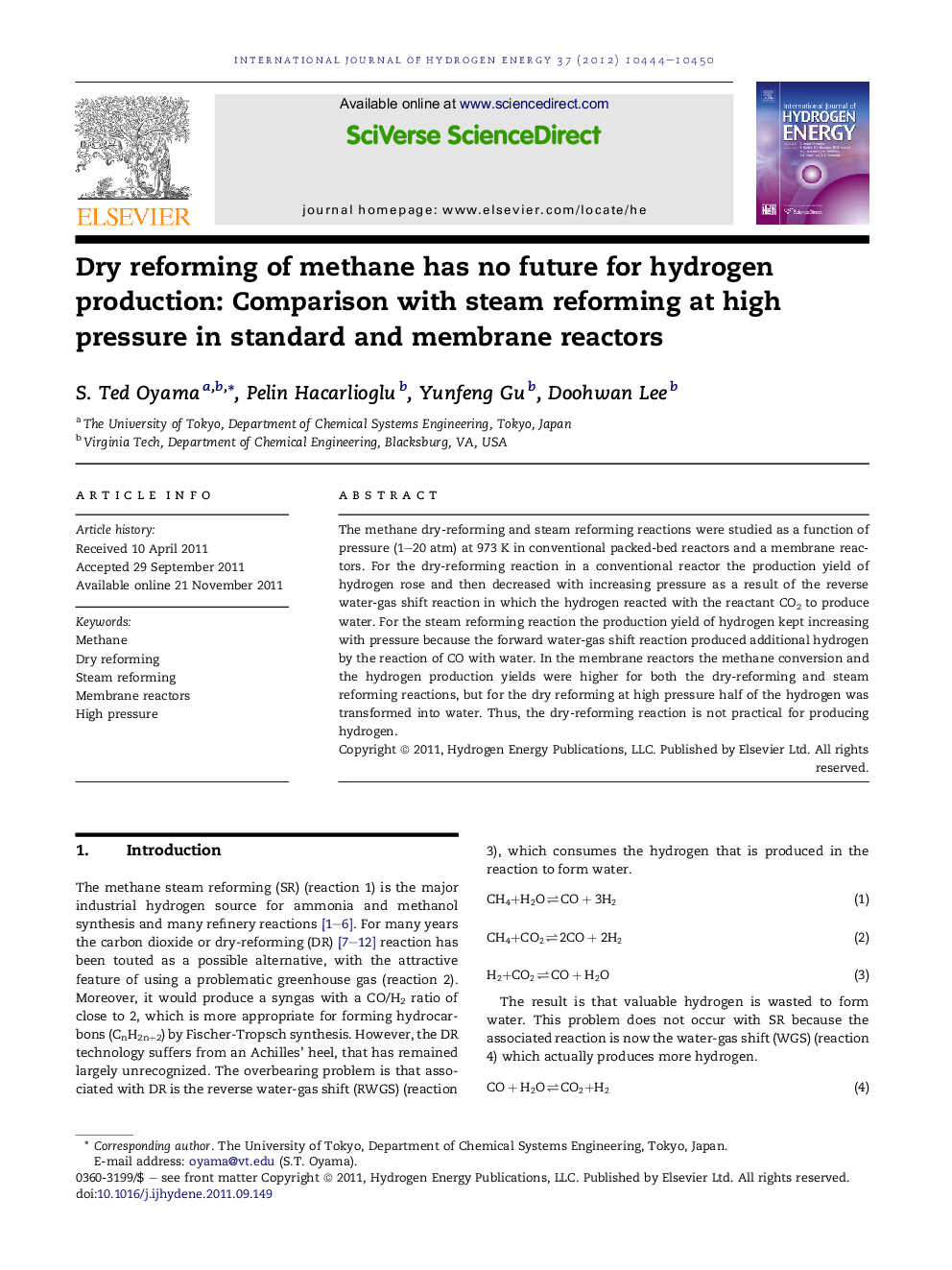| Article ID | Journal | Published Year | Pages | File Type |
|---|---|---|---|---|
| 1275237 | International Journal of Hydrogen Energy | 2012 | 7 Pages |
The methane dry-reforming and steam reforming reactions were studied as a function of pressure (1–20 atm) at 973 K in conventional packed-bed reactors and a membrane reactors. For the dry-reforming reaction in a conventional reactor the production yield of hydrogen rose and then decreased with increasing pressure as a result of the reverse water-gas shift reaction in which the hydrogen reacted with the reactant CO2 to produce water. For the steam reforming reaction the production yield of hydrogen kept increasing with pressure because the forward water-gas shift reaction produced additional hydrogen by the reaction of CO with water. In the membrane reactors the methane conversion and the hydrogen production yields were higher for both the dry-reforming and steam reforming reactions, but for the dry reforming at high pressure half of the hydrogen was transformed into water. Thus, the dry-reforming reaction is not practical for producing hydrogen.
Graphical abstractThe dry reforming of methane forms substantial amounts of water at high pressure and is not a practical method for hydrogen production. CH4 + 2CO2 → H2 + H2O + 3CO.Figure optionsDownload full-size imageDownload as PowerPoint slideHighlights► The CH4 dry-reforming reaction produces H2O through the reverse water-gas shift. ► The CH4 steam reforming produces additional H2 by the forward water-gas shift. ► Membrane reactors improve the hydrogen yield for both reforming reactions. ► There is little future in the dry-reforming reaction for hydrogen production.
